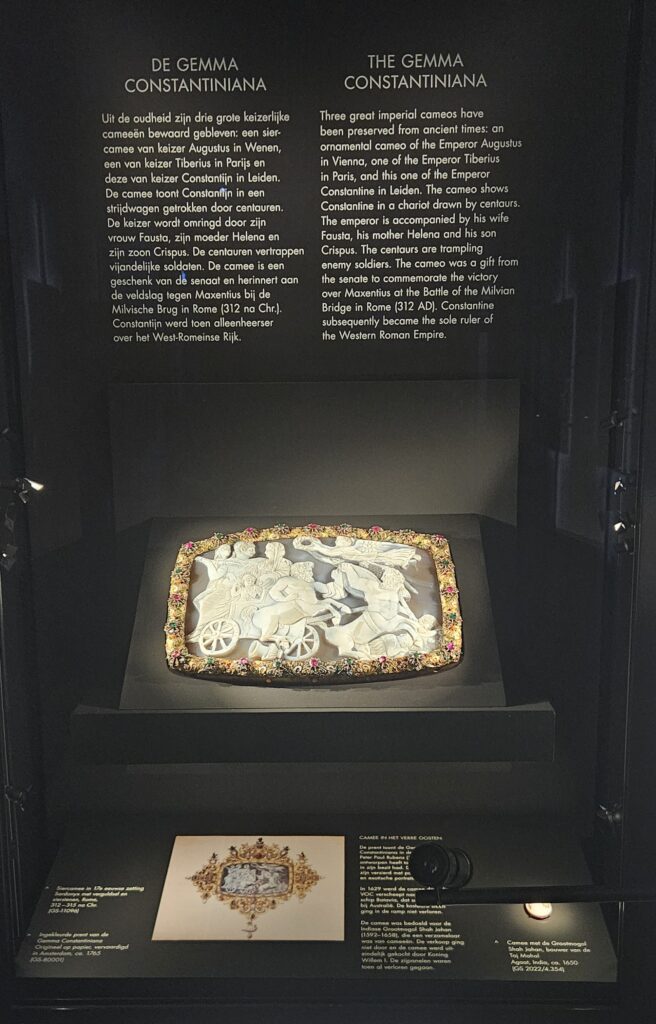
The Gemma Constantiniana is a remarkable artifact – only one of three of the Roman period – that weaves together the stories of ancient Rome, Dutch maritime history, and European royalty. This 4th-century CE sardonyx cameo, created during the reign of Emperor Constantine the Great, celebrates the emperor and his family. It blends Roman and Christian imagery, symbolising the empire’s transition toward Christianity under Constantine, and showcases his imperial power and divine favor.
Centuries later, the cameo became entangled in the dramatic tale of the Batavia, a Dutch East India Company (VOC) ship. In 1628, the Batavia set sail on its maiden voyage to the Dutch East Indies, carrying the Gemma Constantiniana as part of a diplomatic gift for the Sultan of Aceh. The cameo was meant to symbolise the Dutch Republic’s efforts to strengthen trade relations in Southeast Asia.
However, the Batavia never completed its journey. In 1629, it wrecked on the Houtman Abrolhos islands off the coast of Western Australia. The shipwreck was followed by a mutiny and a bloody massacre among the survivors, marking one of the most notorious episodes in maritime history. Miraculously, the Gemma Constantiniana survived the wreck and was recovered during subsequent salvage operations.
The cameo’s journey didn’t end there. In the 19th century it mysteriously showed up in the Netherlands as King William I of the Netherlands purchased the Gemma Constantiniana, adding it to the Dutch royal collection. His acquisition of this ancient artifact further solidified its connection to Dutch history, linking it not only to the Dutch Golden Age and the tragedy of the Batavia, but also to European royal heritage.
The fact that this happened before the wreck of the Batavia was discovered in the 20th century means that one of the survivors of the shipwreck must have taken it back to the Netherlands.
Today, the Gemma Constantiniana is housed in the Rijksmuseum van Oudheden in Leiden, where it stands as a testament to its extraordinary story—from its origins in Constantine’s Rome, through its perilous journey on the Batavia, to its place in the hands of Dutch royalty. The cameo’s survival and continued legacy connect the worlds of ancient imperial grandeur, maritime exploration, and royal patronage, making it a unique symbol of power, survival, and history.

The cameo will be on display in Perth, Australia in 2029, during the 400th anniversary of the shipwrecking of the Batavia.


